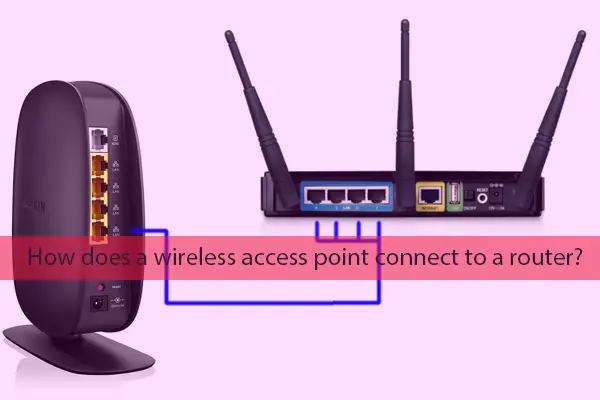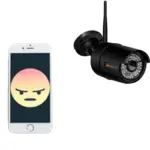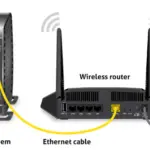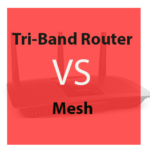Does a Wireless Access Point Need to Be Connected to a Router?
Does a wireless access point need to be connected to a router? You can get the answer to this question below the article. A Wireless Access Point (WAP) enables several devices to join a single network using WiFi. Switches are the electrical equivalent.
WAPs that connect over WiFi and do not require wiring to the router are sold by many manufacturers; nevertheless, these devices are typically referred to as repeaters, extenders, or mesh networks. Yes, you must use an Ethernet cable to connect to the router to Wireless Access Point. In comparison to WiFi range extenders, that has two benefits.
Does a wireless access point need to be connected to a router?
Single wifi can connect with a wireless access point and is connected with multiple devices or networks. To connect this you need a switch of electrical equivalent. Yet, a WAP does not need to connect like a button to the. After establishing a wired Ethernet connection with control or switch port on a router, access points transmit WiFi. Many manufacturers sell WAPs that connect over WiFi and do not need wire to the router; nevertheless, these devices are often known as repeaters, extenders, or mesh networks. A WAP does not have to be linked to the router as a switch does. After connecting WiFi via wired Ethernet to a button or a switch port on a router access Points can transmit.
And of course, you have to connect Wireless Access Point to the router by ethernet. That has two advantages over WiFi range extenders. An extender needs a strong WiFi signal to connect to a router initially. An AP need not be able to receive the WiFi signal from the router. It can be positioned in the center of a large region and has a substantially broader coverage area than an extension. Second, an extender’s speed is half that of a router because everything must be transmitted twice.
Anything your device may connect to access a network wirelessly is commonly referred to as an access point (AP) or wireless access point (WAP). However, a router is technically attached to the network, while an AP may or may not be wired to a router. Extenders or repeaters are additional connectivity points connected to the AP through WiFi and are designed to increase the network’s coverage area. You don’t require a repeater attached to the router if you want to increase the size of your home network.
Also Read: Does An Access Point Need To Be Wired To The Router?
Connecting a single device to the Internet might theoretically be supported by a wireless access point connected directly to a modem. WiFi is merely a means of communication between two devices. It should be feasible to secure a WAP to a modem and utilize wireless rather than a cable to connect to a PC, just like it is possible to connect a PC to a modem through Ethernet. This will rely on the specific configuration options available in the WAP and the nature of the ISP connection.
How does a wireless access point connect to a router?

Every setup process for a wireless access point connected to a router should prioritize security.
Encryption is the primary method for securing WiFi access points. Many encryption methods are supported by modern access points, with WPA2 being the most reliable. Only the WEP encryption technique is supported by some older access points, which are insufficiently safe against recent attacks.
Pick a password that is difficult to guess at all times. It’s recommended that you keep this password to yourself and build a different guest wifi network with a more user-friendly password that you can easily share with friends and visitors that come to visit.
You should be aware of the channel your wireless network broadcasts on in addition to security. The explore mode in NetSpot can gather all the information about nearby wireless networks and display it as an interactive table to determine which wireless channels are the busiest if you can change to a less-frequented channel to benefit from higher download and upload speeds and quicker response times.
Finally, avoid positioning your wireless access point near electronic gadgets that might interfere with it. To maximize the coverage, always utilize a wireless analysis tool like NetSpot.
You can set up a WiFi access point and fix most networking issues just as effectively as a professional expert if you have the necessary tools and a basic understanding of what to do.
What is required for a wireless internet connection access point?
As we have mentioned above, the answer is yes if you want WiFi but have a router that isn’t WiFi-compatible. Additionally, if you have a sizable property with WiFi “blackspots,” you should seriously consider installing access points. A weak WIFI signal could result in a slow internet speed even if you have fiber super-fast broadband that usually functions. You will compromise internet performance if there is a poor wireless link between your router and access point. This can lead to delayed page loads, internet disconnections, buffering when streaming videos from the internet, and other issues that are now considered unacceptable in today’s society.
Testing your broadband speed to ensure it is reasonable is advised before making a hasty purchase. You may utilize a variety of online speed tests for this; just type “speed test” into Google to access Google’s speed test. You may find your broadband speed by clicking “Run Speed Test.” Of course, if you already have a weak WiFi signal, this could lead to the impression that your internet speed is slow even though it is much quicker. Although it’s a little more complicated, we advise accessing your router to check your connection speed for a more accurate result. However, we recognize that this isn’t always possible. WiFi is merely a means of communication between two devices. It should be feasible to connect a WAP to a modem and utilize wireless rather than a cable to connect to a PC, just like it is possible to connect a PC to a modem through Ethernet.
Downloading a free WIFI analyzer app for your phone is the next thing we suggest. You will be able to view the strength of the WiFi that is currently available across your property. Turn it on and take a stroll. There’s a considerable probability that a wireless access point will be helpful for you if it lowers drastically in strength or disappears entirely.
Final Thought
Does a wireless access point need to be connected to a router? Yes, you get the answer to this question above. The joining of a single device to the Internet might theoretically be supported by a wireless access point that is connected directly to a modem.
This will rely on the specific configuration options available in the WAP and the nature of the ISP connection. A strong WiFi signal is required for the first connection of an extension to a router. An AP need not be able to pick up the router’s WiFi signal and may be placed in the middle of a sizable area.







![Tp-Link WiFi 6 Router AX1800 vs AX1500 [Which Is Better?] Tp-Link WiFi 6 Router AX1800 vs AX1500](https://thewifirouter.com/wp-content/uploads/2022/06/Tp-Link-WiFi-6-Router-AX1800-vs-AX1500-150x150.png)
